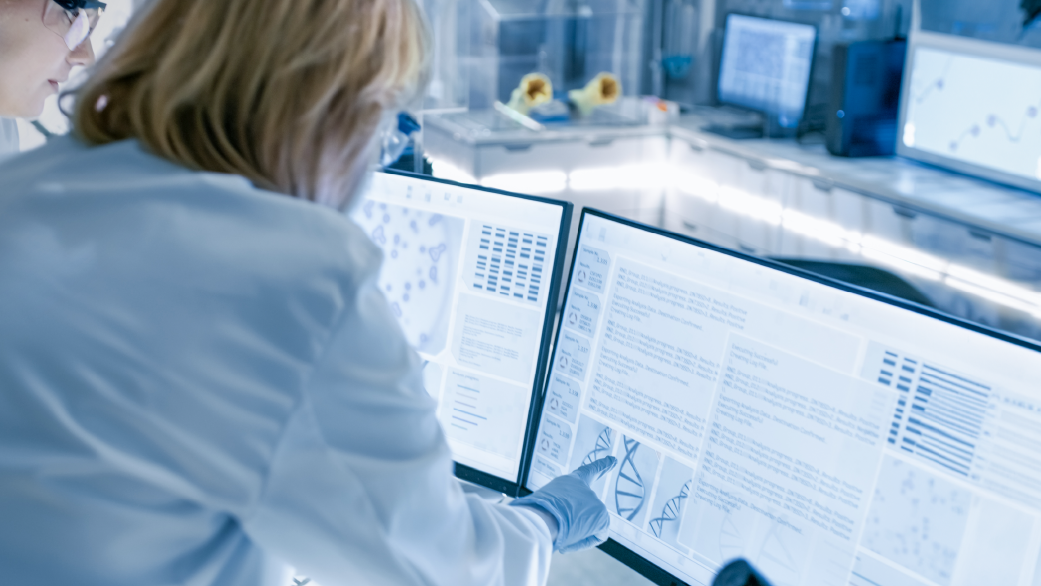Navigating biopharmaceutical complexity: embracing quality-by-design for enhanced development strategies

The implementation of a Quality by Design (QbD) approach enables biopharmaceutical companies and manufacturers to construct more robust processes and analytical methods, resulting in high-quality drug products. This whitepaper explores how we thoroughly manage sources of variability inherent in the process and mitigate risks to support streamlined and standardized production.
Quality by design for biopharmaceutical drug product development
Embraced by regulatory bodies such as the Food and Drug Administration (FDA) and European Medicines Agency (EMA), Quality by Design (QbD) emphasizes a proactive stance toward understanding and mitigating potential risks throughout the drug development lifecycle. First applied to the development of medical devices, the principles of QbD have since been leveraged for small and large molecule biologics.
By employing QbD principles, organizations can comprehensively manage sources of variability inherent in a process and mitigate them to support more streamlined, standardized manufacturing.
QbD questions explored in this whitepaper:
- What are some of the specific challenges associated with implementing QbD in early-stage development, when data is sometimes limited?
- Are there ways you can still leverage some core aspects of QbD to really benefit a process if you’re trying to balance time considerations with supporting robustness early on?
- What are some of the big ways QbD principles may influence or impact data compliance requirements for drug delivery as it relates to regulatory requirements?
- How can QbD principles be effectively integrated with the adoption of new technologies in biopharma manufacturing, such as continuous processing, artificial intelligence (AI), or machine learning (ML)?
- How can QbD be used to promote a culture of continuous improvement within an organization?
- Why is it important to continue to prioritize a QbD approach for mAbs, considering they’re more well-characterized and well-understood than a lot of other biopharmaceuticals in the pipeline today?
- How does Samsung leverage QbD principles in order to improve the quality of regulatory filings for its clients?
- How is Samsung Biologics able to ensure data compliance and optimize the use of available data effectively through a QbD framework within your laboratory operations?

The implementation of a Quality by Design (QbD) approach enables biopharmaceutical companies and manufacturers to construct more robust processes and analytical methods, resulting in high-quality drug products. This whitepaper explores how we thoroughly manage sources of variability inherent in the process and mitigate risks to support streamlined and standardized production.
Quality by design for biopharmaceutical drug product development
Embraced by regulatory bodies such as the Food and Drug Administration (FDA) and European Medicines Agency (EMA), Quality by Design (QbD) emphasizes a proactive stance toward understanding and mitigating potential risks throughout the drug development lifecycle. First applied to the development of medical devices, the principles of QbD have since been leveraged for small and large molecule biologics.
By employing QbD principles, organizations can comprehensively manage sources of variability inherent in a process and mitigate them to support more streamlined, standardized manufacturing.
QbD questions explored in this whitepaper:
- What are some of the specific challenges associated with implementing QbD in early-stage development, when data is sometimes limited?
- Are there ways you can still leverage some core aspects of QbD to really benefit a process if you’re trying to balance time considerations with supporting robustness early on?
- What are some of the big ways QbD principles may influence or impact data compliance requirements for drug delivery as it relates to regulatory requirements?
- How can QbD principles be effectively integrated with the adoption of new technologies in biopharma manufacturing, such as continuous processing, artificial intelligence (AI), or machine learning (ML)?
- How can QbD be used to promote a culture of continuous improvement within an organization?
- Why is it important to continue to prioritize a QbD approach for mAbs, considering they’re more well-characterized and well-understood than a lot of other biopharmaceuticals in the pipeline today?
- How does Samsung leverage QbD principles in order to improve the quality of regulatory filings for its clients?
- How is Samsung Biologics able to ensure data compliance and optimize the use of available data effectively through a QbD framework within your laboratory operations?
Share article
Related Content